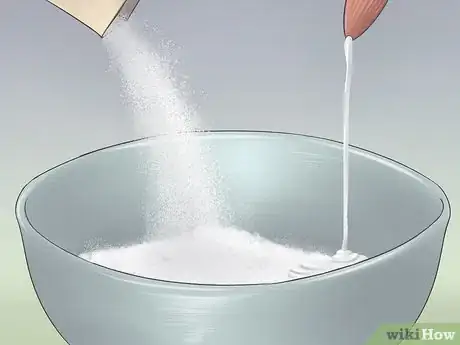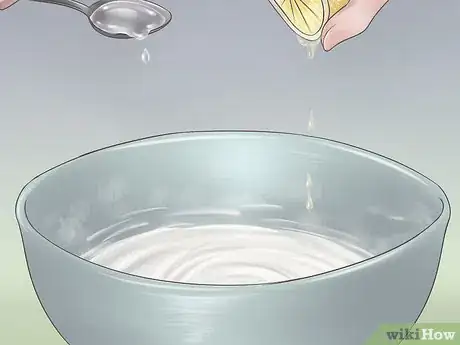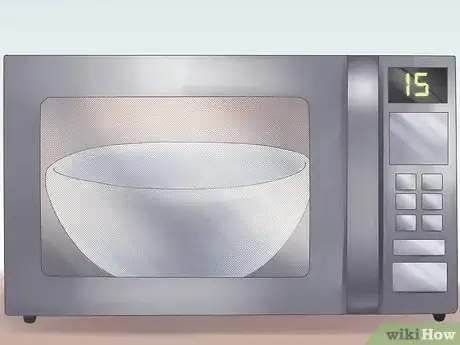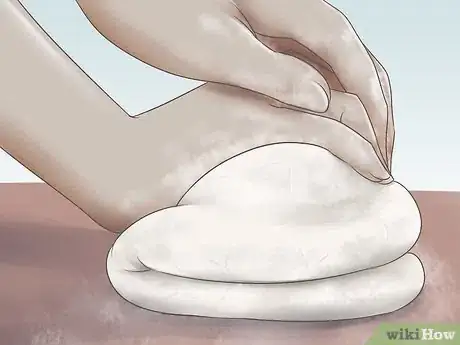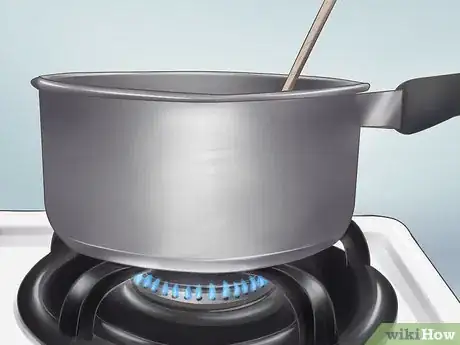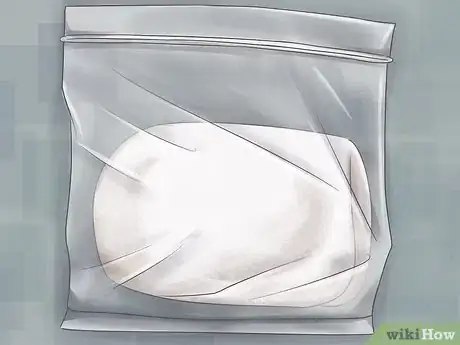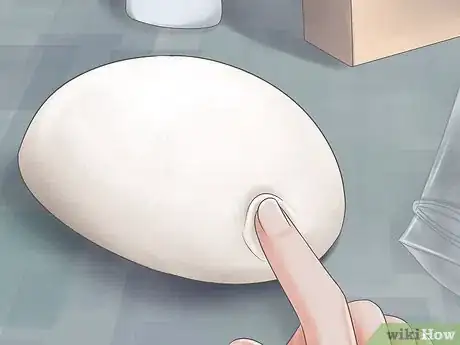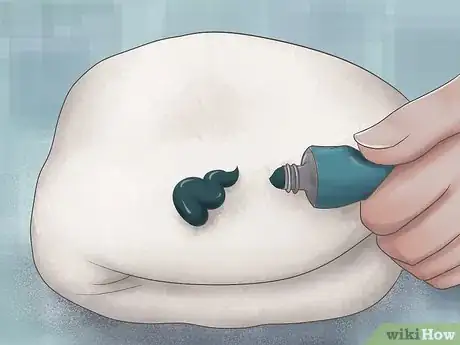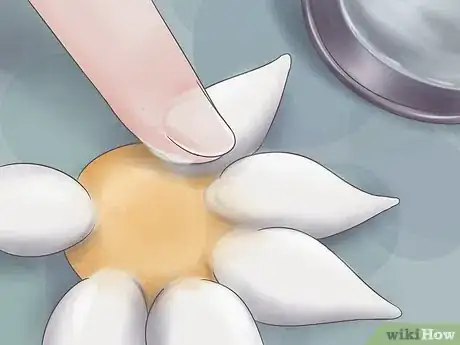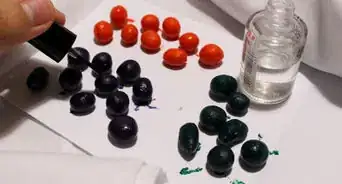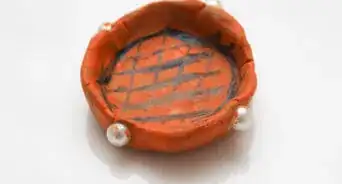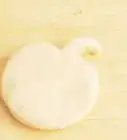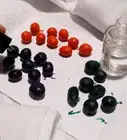This article was co-authored by Natasha Dikareva, MFA. Natasha Dikareva is a San Francisco, California based sculptor, and installation artist. With over 25 years of ceramics, sculpting, and installation experience, Natasha also teaches a ceramic sculpture workshop titled "Adventures in Clay" covering concept development, hand-building techniques, texture, and glazing techniques. Her work has been featured in solo and group exhibitions at the Beatrice Wood Center for the Arts, Abrams Claghorn Gallery, Bloomington Center for the Arts, Maria Kravetz Gallery, and the American Museum of Ceramic Art. She has taught at the University of Minnesota and the American Indian OIC School. She has been awarded the Excellence Award at the 1st World Teapot Competition, Best in Show at the 4th Clay & Glass Biennial Competition, and a Grand Prize at the American Museum of Ceramic Art. Natasha holds an MFA from the University of Minnesota and a BFA from Kiev Fine Arts College.
wikiHow marks an article as reader-approved once it receives enough positive feedback. This article received 22 testimonials and 100% of readers who voted found it helpful, earning it our reader-approved status.
This article has been viewed 647,878 times.
Cold porcelain is not actually made from porcelain, but it's cheap and easy to prepare. If you want to learn how to make cold porcelain, read this wikiHow to get started.
Ingredients
- 1 cup (125 grams) cornstarch or cornflour
- 1 cup (240 mL) white or clear glue
- 2 Tbsp (30 mL) baby oil or olive oil
- 2 Tbsp (30 mL) lemon juice, lime juice, or vinegar
- Lotion (optional)
Steps
Using a Microwave
-
1Mix together 1 cup (125 grams) cornstarch and 1 cup (240 mL) white glue. Use a microwave safe bowl.
-
2Mix in 2 Tbsp (30 mL) baby oil and 2 Tbsp (30 mL) lemon juice. Alternatives are listed in the ingredients section. Keep mixing until there are no lumps present.
- Lemon juice is not vital for consistency but is strongly recommended as it inhibits the growth of mold.
Advertisement -
3Alternate 15-second intervals in the microwave with more stirring. Microwave it for 15 seconds at a time, taking it out to stir in between. Depending on the power of your microwave, this should take somewhere between three and nine 15-second intervals.[1]
- The mixture will form clumps as it cooks. Try to stir in as many of these as possible between microwaving.
- The mixture is ready when it is sticky and very clumpy. This will be easier to judge once you see how your first attempt ends up.
- It's better to make an undercooked batch than an overcooked one, since the former is easier to salvage.
-
4Put lotion on your hands and a clean kneading surface. This will prevent sticking. Feel free to prepare the work surface during the microwave intervals.
-
5Knead the mixture until it cools down. Immediately remove the hot dough-like mixture from the bowl and begin kneading it.
- It will usually take 10 to 15 minutes for the mix to cool to room temperature. Knead the mix for this entire period.
-
6Wrap the mix tightly and let rest 24 hours. Use plastic wrap to make an airtight seal around the cold porcelain mix. Store it in a cool, dry place for 24 hours.
- You can coat the plastic wrap with lotion to prevent sticking.
- To make an easy airtight wrap, shape the mix into a log and roll the plastic wrap around it. Twist each end.
- The refrigerator is a fine place to store the mix, but any location out of direct sunlight, heat, and moisture is fine.
-
7Check consistency. After a day of rest, remove the cold porcelain and see how it turned out. It should now be ready to use.
- Take a piece of the cold porcelain and tear it apart gently. A well made batch will form teardrop shapes as it stretches and breaks.[2]
- If the inside of the clay feels sticky, knead in additional corn starch.
- If the cold porcelain is brittle or dry, it was probably overcooked. You can try adding a little more oil, or make an undercooked batch and knead the two together afterward.
Using a Stovetop
-
1Mix the ingredients in a saucepan. Combine 1 cup (125 grams) cornstarch or cornflour, 1 cup (240 mL) white glue, 2 Tbsp (30 mL) olive oil, and 2 Tbsp lemon juice.
-
2Stir over low heat for 10-15 minutes.Remove the mixture from the heat once it starts pulling away from the side of the pan. It should look similar to ricotta cheese when finished.
-
3Knead until the mixture cools. Wait until it cools down enough to handle it, then knead continually until it reaches room temperature.
-
4Store in an airtight container. Using a ziploc bag or plastic wrap, store the mix in a cool, dry location away from direct sunlight.
-
5Use after waiting for 24 hours. After that point you can adjust the consistency by kneading in additional oil or cornstarch to correct overly brittle or sticky dough (respectively).
Sculpting with Cold Porcelain
-
1Knead in acrylic or oil paint.[3] If you'd like to make a colored porcelain, knead the color of your choice in thoroughly before you begin.
- You can add paint during the initial kneading while making the cold porcelain, but this will reduce its shelf life.
-
2Knead each piece before you shape it. Every time you use a new piece of clay, knead it first to increase its elasticity.
-
3Shape the clay into the desired shape. Well made, kneaded cold porcelain should be easy to sculpt and capable of forming delicate designs.
-
4Attach pieces using water. To attach two wet pieces of cold porcelain, press them together and smooth over the joint with a wet finger.
- Dry pieces can be glued together using ordinary white glue.
-
5Use a base for large pieces. Cold porcelain shrinks significantly as it dries, and a large piece may not dry sufficiently all the way through. Instead, cover a different material with a layer of the clay.
-
6Leave the result to dry. Cold porcelain requires no additional cooking and will harden simply when exposed to air.
- How long this takes depends greatly on the size of your sculpture, the temperature, and the humidity of the air. Keep checking until it is hard.
-
7Seal your sculpture. Without a seal, your cold porcelain art will be vulnerable to "melting" in heat or water, although you should still keep sealed art in a cool dry place when possible.[4]
- There are many types of sealant and lacquers intended for clay, with various glossy or matte finishes. Clear acrylic sealer is a simple transparent option.
- There are several types of clay.[5]
- You should decide whether you want to make pots or sculptures with the clay. The same clay may not be appropriate for working on the wheel and making sculptures.[6]
- Then find an appropriate formula for making clay from the ceramics magazine.
Community Q&A
-
QuestionHow hard is dried cold porcelain?
 Community AnswerDepending on thickness, it can be very hard. A quarter inch piece would be hard to break.
Community AnswerDepending on thickness, it can be very hard. A quarter inch piece would be hard to break. -
QuestionHow do I clean the pot after making porcelain?
 Community AnswerAlways wait until the pot is a little cool. Then, fill with hot water and let it soak till the water is cooled. Pour the water out and wash it like usual.
Community AnswerAlways wait until the pot is a little cool. Then, fill with hot water and let it soak till the water is cooled. Pour the water out and wash it like usual. -
QuestionWould this be a good choice for making a shawl or hair pin?
 Community AnswerIt could be, but remember that cold porcelain is going to dry hard and unable to bend, so you will have to be very careful with your pin.
Community AnswerIt could be, but remember that cold porcelain is going to dry hard and unable to bend, so you will have to be very careful with your pin.
Warnings
- Preparing cold porcelain leaves a mess on the bowls, utensils, and saucepans used. Clean them off before the mixture dries on them, and don't use fancy cookware.⧼thumbs_response⧽
- You must use cornstarch or corn flour. No other type of starch or flour will do.⧼thumbs_response⧽
- The clay will be very hot when it's done cooking.⧼thumbs_response⧽
Things You'll Need
- Microwave-safe bowl
- Mixing utensil
- Plastic wrap
- Microwave or saucepan
References
- ↑ https://www.youtube.com/watch?v=AxqmMyLwxk0
- ↑ https://www.youtube.com/watch?v=AxqmMyLwxk0
- ↑ http://www.craftstylish.com/item/2802/how-to-make-cold-porcelain/page/all
- ↑ http://janestreetclayworks.com/2011/06/26/cold-porcelain-made-from-ingredients-in-your-home/
- ↑ https://www.artmolds.com/clay-types
- ↑ https://www.artistsandillustrators.co.uk/how-to/sculpture/beginners-guide-to-sculpting-in-clay/
About This Article
To quickly make cold porcelain, combine 1 cup (125 grams) of cornstarch, 1 cup (240 mL) of white glue, 2 Tbsp (30 mL) of baby oil, and 2 Tbsp (30 mL) of lemon juice. Microwave it at 15-second intervals, stirring between each one. Knead the dough for 10 to 15 minutes until it cools. Wrap it tightly and let it rest for 24 hours. For more methods and sculpting ideas, read on!
